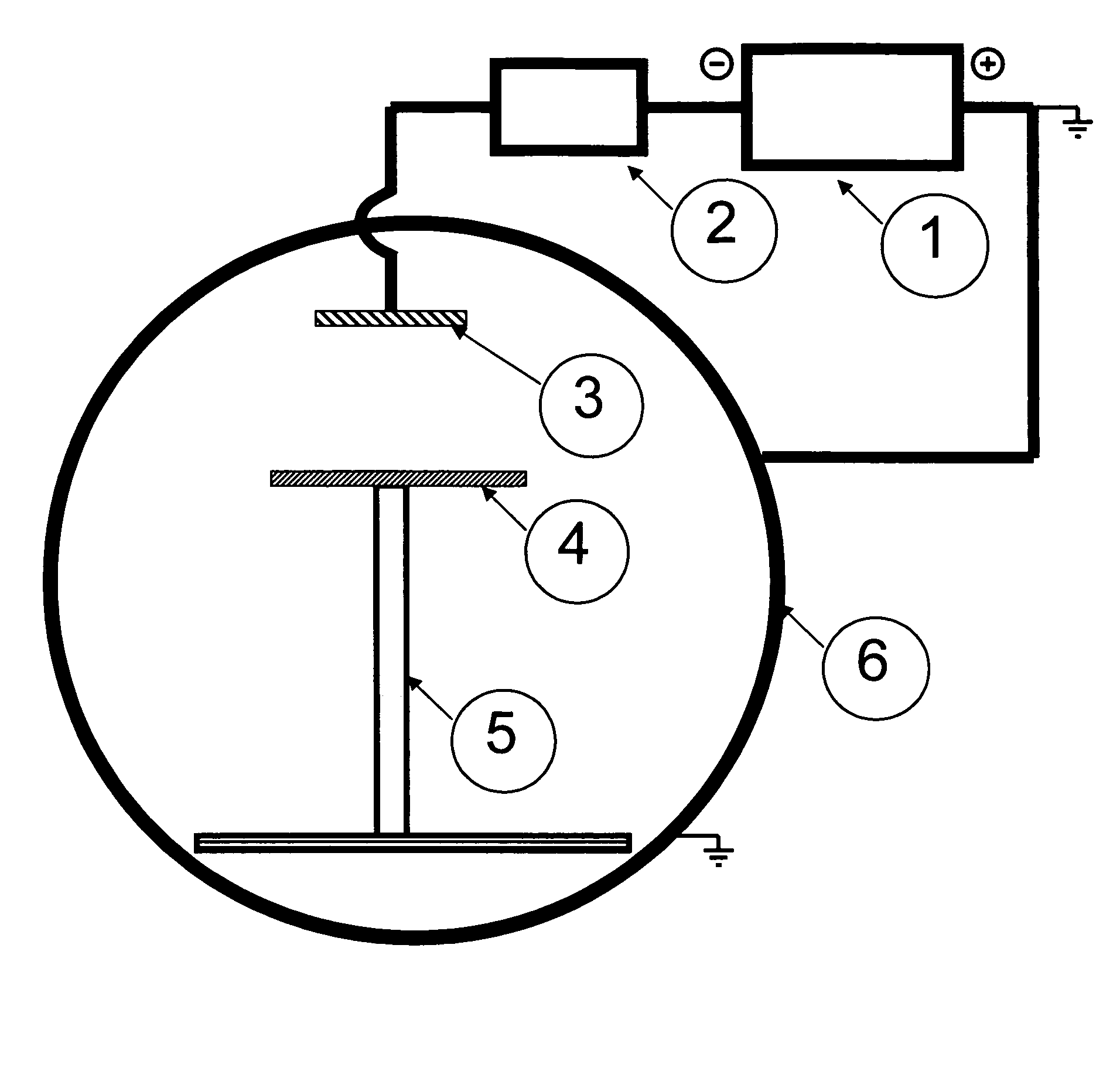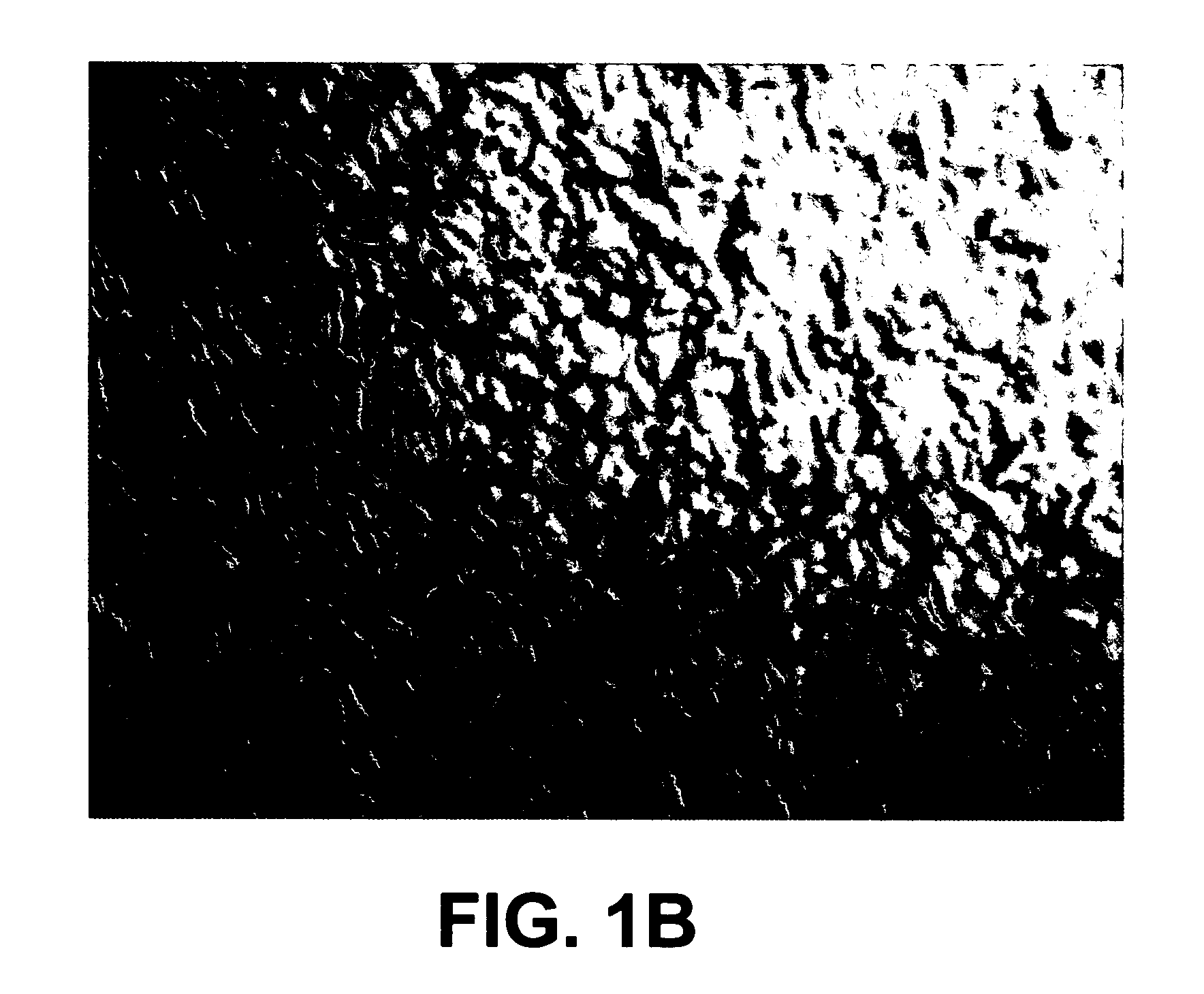Controlled phase transition of metals
a phase transition and metal technology, applied in the field of physical chemistry, can solve the problems of wasting 90% of energy input as heat, unable to harness electromagnetic energy for controlling liquid/solid phase transition, and unable to achieve the effect of transforming metals quickly and reducing energy consumption
- Summary
- Abstract
- Description
- Claims
- Application Information
AI Technical Summary
Benefits of technology
Problems solved by technology
Method used
Image
Examples
example 1
Apparatus for Generating Electromagnetic Field
[0031]A vacuum chamber was constructed of ⅜″ thick A6 steel with a diameter of 30 in and a length of 36 in. The chamber was pumped with a VHS 6 oil diffusion pump with 400 ml of DuPont 704 diffusion pump oil. The pump was backed by a 30 CFM Pfeiffer mechanical pump with 1 liter of Stokes C-77 pump oil. The chamber was rough pumped by a Leybold E-75 pump with a WU 500 blower package with Fomblin oil. The pump down of the chamber was controlled by internally designed circuits utilizing an MKS 636 baratron and a BP ion gauge. The apparatus includes a 6×1×20 in, 99.99% pure nickel target with water cooling and two power inputs. This cathode was driven by a Miller 304 CC / CV power supply and a Miller analog pulsing unit.
[0032]An alternative to the 6×20 in target cathode are small round target cathodes with a surface diameter of 1 to 6 in. This target configuration can assist in the localization of the transfer of current from the cathode to th...
example 2
Electromagnetic Field Induced Phase Transition of Aluminum
[0033]Aluminum was selected as the substrate. The pulse current generated by the electromagnetic field using the apparatus described in Example 1 was 300 Hz. Localization of the current outflow from the cathode to the anode in the pulsed mode must be locally confined. At the reported powers, the area of electron flow was confined consistently to an area approximately 3 inches in diameter. This confinement allows creation of a coherent beam in which the EM field travels.
[0034]An 8×¼×12 in 6061T6 aluminum plate was placed in an aluminum 2×2×¼ in wall thickness square channel of conductive aluminum that was 22 in tall. This placed the substrate 8 in from the surface of the target. The apparatus was constructed as described in Example 1 and the chamber was pumped to a level of 5E-4 Torr. The power supply was set to 300 amps, 20 V output. The pulsing unit was set with at background current of 75 amps, a pulse width of 2 ms, and a ...
example 3
Electromagnetic Field Induced Phase Transition of Steel
[0039]A steel plate was placed 3 feet from the target and exposed to a coherently focused electromagnetic beam for 10 s to 2 min using the apparatus described in Example 1 under the conditions set forth in Example 2. The metal began to flow at 200° C., which is significantly lower than heat-induced melting, which requires a temperature of 1515° C.
PUM
| Property | Measurement | Unit |
|---|---|---|
| frequency | aaaaa | aaaaa |
| temperatures | aaaaa | aaaaa |
| diameter | aaaaa | aaaaa |
Abstract
Description
Claims
Application Information
 Login to View More
Login to View More - R&D
- Intellectual Property
- Life Sciences
- Materials
- Tech Scout
- Unparalleled Data Quality
- Higher Quality Content
- 60% Fewer Hallucinations
Browse by: Latest US Patents, China's latest patents, Technical Efficacy Thesaurus, Application Domain, Technology Topic, Popular Technical Reports.
© 2025 PatSnap. All rights reserved.Legal|Privacy policy|Modern Slavery Act Transparency Statement|Sitemap|About US| Contact US: help@patsnap.com



